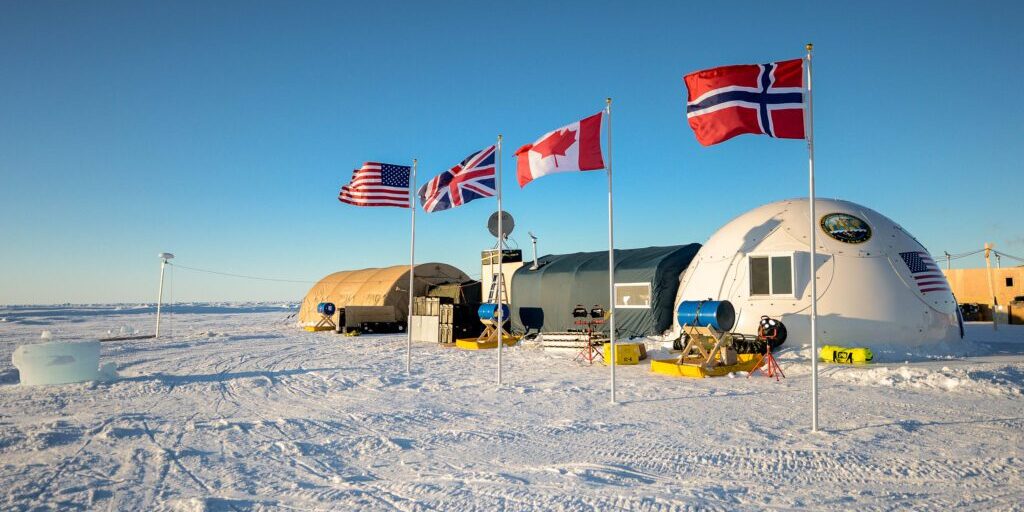As springtime makes its gradual — and sometimes dramatic — arrival in the sub-Arctic, ice, especially the ice covering the sea and local rivers, is one of the clearest metrics for the changing of the season.
The melting and breaking apart of wintertime ice is what gives this phase of the year its northern nickname, “breakup.” For more than four decades, KNOM has broadcast weather and news updates on the progress of breakup in our region, thus fulfilling our mission to keep Western Alaska listeners informed — because while the thawing of river and ocean ice is a slow process, it also carries with it the specter of hazards for our region, whether in the form of dangerous transportation routes or local flooding. Indeed, in recent months, ice — especially the lack of it — has been a frequent subject of our news stories. Here are a few notable examples.
In late March, news volunteer Emily Russell reported that a US-Navy-led facility for international research — Ice Camp Sargo (pictured), located on a large ice floe off the coast of Alaska’s Prudhoe Bay, within the Arctic Circle — had to demobilize early because of historically low levels of Arctic Ocean ice cover. “The Navy,” as Emily wrote, “has held its Ice Exercise, or ICEX for short, to test military readiness and conduct scientific research in the far north every few years since 1960.” In late winter 2016, record lows in Arctic ice cover, coupled with unusually warm temperatures, led the installation to pack up early. Thankfully, Sargo’s 200-plus participants were all evacuated safely.

It was a safe rescue from thin ice, too, for a pair of British explorers who attempted to make a partial sea crossing of the Bering Strait — the body of water separating Western Alaska from eastern Russia — but failed because of unexpected ice conditions. In another Emily Russell story, KNOM broadcast the news of Neil Laughton and James Bingham (pictured above), who hoped to cross between the Western Alaska villages of Wales and Diomede by walking and paddling across the frozen and open water sections of the Bering Sea that they encountered. Despite ample preparations — and prior experiences climbing Mount Everest and skiing to both the North and South Pole — the explorers found themselves mired in unpredictable sea ice conditions, surrounded by ice too thin to walk or make camp and too thick to paddle through. In the days after they were rescued and brought back to safety in Nome, KNOM brought their incredible story to our listeners. Underscoring the extremity of the landscape immediately surrounding KNOM country, Laughton told Emily, “there are three outcomes” for an expedition like theirs, through the sub-Arctic: “there’s success, there’s rescue, and there’s death.”

While expeditions like Laughton and Bingham’s are relatively rare, minimizing dangerous search-and-rescue situations like theirs is a constant concern for local military and law enforcement personnel — and for our radio mission. Especially as the ice thaws in springtime, safety for rural Alaskans is always a very serious matter, and we do our part to keep listeners safe by keeping them informed. As news volunteer Laura Kraegel reported in mid-April, for instance, the early melting of ocean ice in the eastern Norton Sound, well within KNOM’s AM listening range, led officials to warn residents in Elim, Alaska (pictured above), to avoid long-established wintertime snowmachine (snowmobile) trails on the sea ice and to take overland routes instead when traveling to and from the nearby communities of Koyuk and Golovin.
This springtime, your support continues to allow our mission to bring these unique, and occasionally life-saving, snapshots of our incredible region to the people who live here. Thank you.






